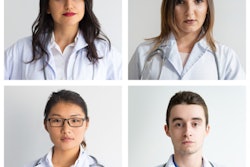
Medical students continue to be interested in both diagnostic and interventional radiology if preliminary data from this year's Main Residency Match are any indication. Only 10 U.S. diagnostic radiology programs reported unfilled PGY-2 slots, while all interventional programs filled their available slots, according to the National Resident Matching Program (NRMP).
Match Day took place on March 15, with thousands of medical students and residency programs around the U.S. taking part. The Match places medical students with residency programs that correspond to the specialty they want to enter, the final step in an arduous yearlong process of applications and interviews. Residents will spend the next three to seven years training in residency programs.
The 2019 Match was the largest in the NRMP's history, with 38,376 applicants submitting their program choices for 35,185 available positions -- the most ever offered in the Match. The number of available first-year (PGY-1) positions rose 6.5% to 32,194, representing growth of 1,962 slots compared with 2018.
In diagnostic radiology, 965 PGY-2 positions were offered at 178 programs, with just 10 programs reporting going unfilled, for a filled program rate of 94.4%. In all, 665 (68.9%) PGY-2 positions were filled by U.S. seniors, with the rest coming from graduates of international medical schools. In interventional radiology, U.S. seniors filled 101 (89.4%) of the 113 positions available, with the rest filled by international medical students.
On the other hand, radiation oncology saw a sharp drop compared with prior years, when only a handful of programs went unfilled. In all, only 163 radiation oncology PGY-2 positions were filled out of 192 offered, a match rate of 84.9% by program and 75.6% by positions. For 2019, 15 more radiation oncology residency positions were offered compared with 2018. The number of positions filled by U.S. allopathic seniors fell by 15 percentage points, according to NRMP.
The Match results are closely watched because they are predictors of future supply in the physician workforce, the NRMP noted. The competitiveness of different medical specialties can be assessed by the percentage of positions filled overall and the percentage filled by seniors from U.S. allopathic medical schools.



















